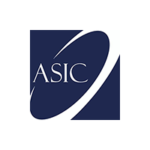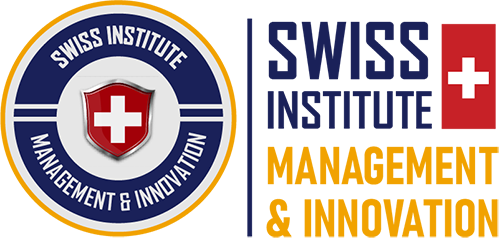Certified Chief Risk Officer
Covid-19 had created massive disruption to global supply chain globally impacting all businesses in the world as their transportation for land, air and sea came to a complete halt since March/April 2020. This phenomena had caused chaos amongst many international businesses and global governments into an unknown situation of not knowing what to do next.
Therefore, the importance of having the Chief Risk Officer (CRO) in any corporation is key to lead and provide enterprise-wide risk guidance to their respective corporation out of this chaotic situation.
This 10-week program is designed to train each participant to be ready as CRO of tomorrow to lead their respective corporation facing present strategic risks uncertainty and enterprise risk challenges. Each participant will learn to develop an enterprise risk framework and implement for their respective corporation starting from aligning the enterprise risk strategy to corporate strategy through identification, measure, monitor, control and mitigate key risks with the right tools.
By the end of this training program, each participant will be able to:
- Able to identify all categories of key risks within a corporation
- Appreciate, with in-depth, the manner that key risks can be identified, measured, monitored, controlled and mitigated within a
- Align ERM strategy to strategic plan and its impact on
- Gain insights on how to perform the role of CRO and lead the enterprise risk management functions within the
- Establish and implement the enterprise risk management
- Setup enterprise risk metrics to quantify all key risks and establish enterprise risk reporting structure with risk response
Training methodology
This 10-week program is entirely interactive and every participant will be fully participative in group discussion, exercises and case studies. A step-by-step guidance in how to develop, establish and implement an ERM framework will be taught to each participant. Trainer will coach each participant and ensure that each participant is able to execute the ERM framework in addition to the stipulated training hours.
Who should attend
Anyone who is currently working in the risk management department, compliance department and internal audit are welcome to join this certification program.
Course requirements
Participant should have at least 5 years of practical and managerial experiences in risk, compliance and/or audit related experiences. He/she needs to have pre-requisite knowledge in finance and capital markets.
Module A – Enterprise Risk Governance
This unit will, in addition to the development of an enterprise risk governance framework, require participants to work efficiently with stakeholders of his/her company to establish the risk appetite statement, identify key risks that arise from the implementation of strategic objectives of the strategic plan, and lastly to implement the framework across enterprise wide of his/her company.
Understand the role of a Chief Risk Officer (CRO)
- Understand the importance of linking enterprise risk management strategy to strategic objectives of the strategic
- Map out the role and responsibilities of CRO within the
- Examine the integration of organisational governance within the company’s organisational structure
To be able to setup Enterprise Risk & Governance Framework with incorporation of Strategic Plan
- Appraise the effectiveness of an Enterprise Risk Framework of a
- Evaluate the setting of risk appetite and risk capacity
Keep abreast with the latest development of types of Enterprise Risk Part 1 – Financial, Compliance and Regulatory
- Critically evaluate key risks arising from financial – credit, market and liquidity, compliance and regulatory arise from the strategic
- Assess new emerging risks like Conduct and compliance related on Work From Home (WFH).
- Explain the inter-relationship of regulatory risks to both compliance and financial risks.
Keep abreast with the latest development of types of Enterprise Risk Part 2 – Operational
- Understand the inter-relationship of operational risks to other types of key risks especially new risks like health & safety and 3rd
- Identify the seven (7) categories of operational risks per
- Able to identify, measure, monitor and control key operational risks within the company.
Keep abreast with the latest development of types of Enterprise Risk Part 3 – Cyber Risk
- Critically assess the various types of key cyber
- Establish appropriate techniques to monitor and control cyber
- Keep abreast of the latest development of new types of cyber risks
REAL LIFE CASE STUDY
To achieve this unit, participants must achieve the learning outcomes and meet the standards specified by all assessment criteria for the unit. Participants will be given a real-world case study, usually Harvard Business or its equivalent cases, and required to apply all the 5 LOs of Unit A and submit a written assignment to be marked by internal assessor.
Module B – Strategic Risk Management
The aim of this unit is get participants to deep into the role of CRO to assess any potential strategic misalignment between Enterprise Risk Management (ERM) strategy to the strategic objectives of the strategic plan. The most key common causes include the existence of cognitive dissonance in strategic decision making and failure to identify the sub-types of strategic risks.
To be able to align the ERM strategy to Strategic Objectives of the Strategic Plan
- Assess the potential misalignment of enterprise risk management strategy to strategic objectives of the strategic
- Setup the role of CRO in identifying key risks at strategic
- Assess the potential existence of cognitive dissonance at strategic decision making
Keep abreast of latest Strategic Risks like emerging technology, 3rd party risks, WFH, conduct risks and disruptive technology risks
- Able to recognise the impact of emergence of new technology and disruptive risks to a company.
- Identify and control such disruptive risks arising from new technology especially WFH.
REAL LIFE CASE STUDY
To achieve this unit, participants must achieve the learning outcomes and meet the standards specified by all assessment criteria for the unit. Participants will be given a real-world case study, usually Harvard Business cases, and required to apply all the 2 LOs for Unit B and submit a written assignment to be marked by internal assessor.
Module C – Leadership in Enterprise Risk Management
The aim of this unit is to provide the underpinning knowledge to participants on the importance of the Chief Risk Officer (CRO) to be able to communicate and obtain buy-in from stakeholders, in both managing key risks effectively and shown ability to instil a risk culture within the company wide.
The CRO must be able to manage and execute a crisis management plan as well as prepare ERM team to handle potential black swan events.
Understand the importance of effective communication by the Chief Risk Officer (CRO)
- Apply the techniques of communicating effectively by the CRO to his/her internal and external
- Manage and lead the execution of a crisis management plan as well as black swan events
- Inspire, lead and foster teamwork to instil a risk culture within the company
Be able to manage and control enterprise risk management operations as an effective risk leader
- To be able to manage the company’s enterprise risk management operations efficiently.
- To place the right talents for the right job scope in the company.
- To plan, structure and report key risks to C-suits and BoDs on timely
REAL LIFE CASE STUDY
To achieve this unit, participants must achieve the learning outcomes and meet the standards specified by all assessment criteria for the unit. Participants will be given a real-world case study, usually Harvard Business cases, and required to apply all the 2 LOs for Unit C and submit a written assignment to be marked by internal assessor.
Module D – Enterprise Risk Quantification, Reporting and Response
The aim of this unit emphases the role of the Chief Risk Officer (CRO) in the approval of quantification of key risks occurred in the mapping of key processes for each of the strategic objectives from the strategic plan. The participant will learn how to institute the risk reporting structure and assign the responsibilities, known as Key Risk Indicators (KRIs) to both C-suites and Board of Directors (BoDs) and as well as the required risk responses from both of them in a timely manner.
Be able to demonstrate the approval of quantifying the key risks in the process of implementation the strategic objectives
- Ensure C-suites are able to identify and measure key risks arising from the execution of strategic
- Critically assess the ability to approve the quantifying of key risks in the implementation of strategic
- Provide risk advisory to C-suits and BoDs in the process of quantifying the enterprise key
Shown ability to establish enterprise risk metrics and setup risk reporting structure
- Assess the appropriate techniques used to create the enterprise risk
- Perform the role to establish effective communication links with C-suites and BoDs on reporting the enterprise risk metrics
Be able to setup appropriate enterprise risk response techniques and policy
- Evaluate any potential trade-offs between pre-event planning and post-event response gaps on a timely
- Assess the appropriateness of the risk response techniques and its capacity to meet enterprise
- Establish best practice for risk control, supply chain and contract management, insurance and related matters.
Module E – Enterprise Risk Management Project
The aim of this unit is to provide participants a hands-on application of the participants’ Enterprise Risk Management (ERM) knowledge, techniques and strategies, from the perspective of a Chief Risk Officer (CRO), onto the participants’ respective companies using action learning research method with coaching from trainers/lecturers. This unit will be broken into three (3) parts with different Learning Outcomes (LOs) to allow participants to dwell in-depth in this entire CRO program covering Units A, B, C and D.
Able to implement ERM Project Part 1 (covers entire Unit A)
- Assess participants’ ability to link enterprise risk management strategy to strategic plan.
- Evaluate the participants’ ability to assess the integration of organisational governance within his/her
- Identify gaps in the participants’ existing enterprise risk framework of his/her company.
- Assess the appropriate setting of the company’s risk appetite and risk
- Assess participants’ ability to evaluate the identification of key risks – credit, market, liquidity, compliance, strategic, operational, regulatory, conduct and cyber
Able to implement ERM Project Part 2 (covers entire Unit B and C)
- Assess the potential misalignment of enterprise risk management strategy to strategic objectives of the strategic
- Evaluate the setup of CRO’s role in the strategic risk management
- Evaluate the effective identification and control of new key risks from new technology that are disruptive to the
- Evaluate the appropriate techniques used to achieve effective communications amongst stakeholders.
- Assess the participants’ ability to manage the company’s risk management operations effectively with deployment of right
- Evaluate the participants’ ability to plan, structure and report key risks to C-suits and BoDs on timely
Able to implement ERM Project Part 3 (covers entire Unit D)
- Evaluate the participants’ ability to identify and measure key risks of the
- Assess the participants’ ability to approve the process of quantifying key risks and advise BoDs promptly.
- Evaluate the participants’ ability to use appropriate techniques to create enterprise risk metrics.
- Assess the participants’ ability to establish effective communication links with C-Suits and BoDs on the risk metrics
- Evaluate the participants’ ability to assess the effectiveness of the risk response techniques for effective risk control, supply chain, contract management and insurance related
REAL LIFE CASE STUDY
To achieve this unit, participants must achieve the learning outcomes and meet the standards specified by all assessment criteria for the unit. Participants will be given a real-world case study, usually Harvard Business cases, and required to apply all the 2 LOs for Unit D and submit a written assignment to be marked by internal assessor.
Every participants will either use their own organization or an approved case study and attempt to apply all the knowledge that they had acquired over the 10-week. This includes all the Learning Outcomes for the 5 Modules from Module A to E. All assessments will be then assessed by a panel of international experts in the 2 accrediting bodies in addition to the trainer.

Dr. Christopher Goh
Dr. Christopher is a professional, with some 25 years with extensive experience in, risk management, design thinking, compliance, anti-money laundering, strategic planning, exotic options, behavioural finance, and structuring products using derivatives and in particular to enterprise risk management where he spent some 15 years in this area, where he was the pioneer in risk management, since 1989.
He holds the title of chief risk officer for Asia Pacific having established holistic enterprise risk management and compliance framework, which includes anti-money laundering, sanctions, compliance and governance, spearheaded the implementation enterprise risk management process for some 3 international banks in Asia Pacific.
He had implemented enterprise risk management and compliance framework through practical experience gained through various diverse economic cycles. He had worked for 6 different banks over a period of some 25 years across 6 different cultures, business practices and management styles. This had given him a very deep knowledge in handling clients and managed staff from diverse cultural background.
Dr Christopher had conducted many in-house corporate seminars for the past 15 years training international and central bankers, senior management from government bodies from Asia region like Malaysia, Indonesia, Taiwan, China, Singapore, South Korea, Thailand, Hong Kong, Vietnam, Myanmar, Philippines, and to as far as London, Vienna, Jeddah, Riyadh, Kuwait, Johannesburg, Lagos (Nigeria), Accra (Ghana), Nairobi (Kenya), Dubai, Zimbabwe, Zambia, Lesotho, Moscow and Ulaanbaatar (Mongolia). He had since travelled to some 38 international cities to conduct international workshops and consultancies.
His current seminars and consultancy works are mainly focused on Governance, Risk and Compliance, Design Thinking for Bankers and Non-bankers, Enterprise Risk Management, Setting KPIs with Enterprise Balanced Scorecard, Organisational Development Audit/Assessment, Compliance Risk Management, Operational Risk and Compliance Management, Transforming Strategy into Business Results.
He had published over 20 Risk Management, Strategy and Technopreneurship articles. He had co-authored 2 books published in 2017:
- Design Thinking for Management, Leadership and Technopreneurship, TWAN Pte Ltd, 1st Edition, ISBN: 978-981-11-4217-8, published in December 2017
- Technopreneurship: in Industry 4.0, TWAN Pte Ltd, 1st Edition, ISBN: 978-981-11-3875-1 published in December 2017
Dr Christopher has most recently been appointed as Dean for School of Finance and Banking with Swiss Institute of Management and Innovation based in Zug, Switzerland. He is also an Adjunct Visiting Faculty to some foreign universities namely: Shanghai JiaoTong University, Central University of Finance and Economics (Beijing), Harbin Institute of Technology (Harbin), S.P. Jain (Singapore and Dubai campus) on a yearly basis on banking certification courses and/or EMBA courses.
The Certified Chief Risk Officer (CCRO) is the unique programs from the Swiss Institute of Management and Innovation (SIMI)’s School of Finance & Banking. This program is also accredited as the other accredited programs from SIMI.
Accreditation & Recognized of the Swiss Institute of Management and Innovation (SIMI)

Zug Canton

